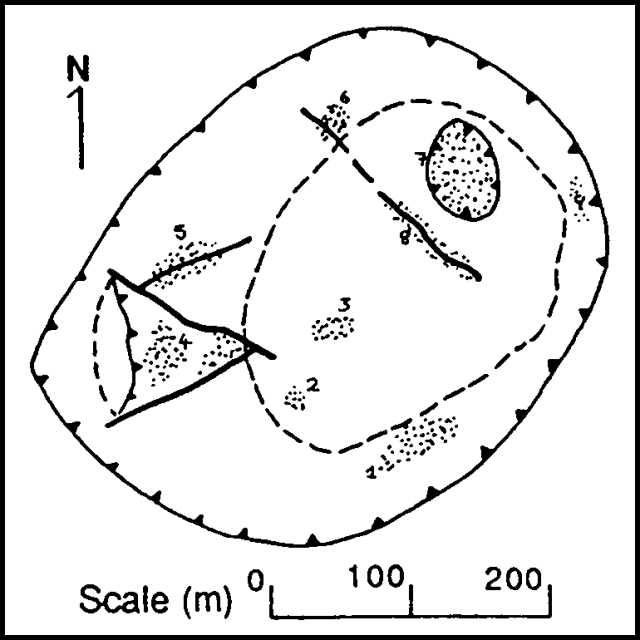Report on Telica (Nicaragua) — January 1988
Scientific Event Alert Network Bulletin, vol. 13, no. 1 (January 1988)
Managing Editor: Lindsay McClelland.
Telica (Nicaragua) Eruption in November 1987 forms a new vent in the crater
Please cite this report as:
Global Volcanism Program, 1988. Report on Telica (Nicaragua) (McClelland, L., ed.). Scientific Event Alert Network Bulletin, 13:1. Smithsonian Institution. https://doi.org/10.5479/si.GVP.SEAN198801-344040
Telica
Nicaragua
12.606°N, 86.84°W; summit elev. 1036 m
All times are local (unless otherwise noted)
An eruption occurred in November 1987 but was not observed by geologists. Residents of the area near the E side of the crater reported an incandescent column and loud bangs but said that the eruption was less intense than others in recent years. Newspapers printed photographs of a small eruption column.
Geologists found small fresh basaltic bombs 50 m from the E rim of the crater that may have been from the eruption. A vent 30-50 m wide had opened in the NE corner of the crater. The maximum temperature on a rock surface in the new vent was 246°C. Fumarolic activity was markedly stronger than in 1985-86, when only one large fumarole had been present, on the N side of the crater. In January 1988, there were fumaroles on all sides of the crater and on its floor (figure 1). At least one was emitting gas with a loud roar, and the plume was visible from 5 km away.
The fumarole field [at San Jacinto Hot Springs] had temperatures no higher than 101°C on 17 January.
Geological Summary. Telica, one of Nicaragua's most active volcanoes, has erupted frequently since the beginning of the Spanish era. This volcano group consists of several interlocking cones and vents with a general NW alignment. Sixteenth-century eruptions were reported at symmetrical Santa Clara volcano at the SW end of the group. However, its eroded and breached crater has been covered by forests throughout historical time, and these eruptions may have originated from Telica, whose upper slopes in contrast are unvegetated. The steep-sided cone of Telica is truncated by a 700-m-wide double crater; the southern crater, the source of recent eruptions, is 120 m deep. El Liston, immediately E, has several nested craters. The fumaroles and boiling mudpots of Hervideros de San Jacinto, SE of Telica, form a prominent geothermal area frequented by tourists, and geothermal exploration has occurred nearby.
Information Contacts: B. van Wyk de Vries, H. Rymer, and G. Brown, Open Univ; P. Hradecky and H. Taleno, INETER.


